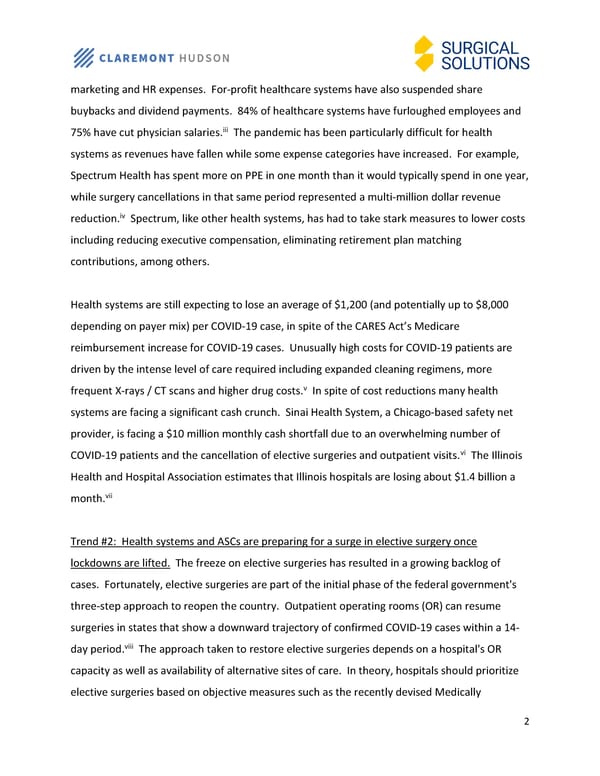marketing and HR expenses. For-profit healthcare systems have also suspended share buybacks and dividend payments. 84% of healthcare systems have furloughed employees and iii 75% have cut physician salaries. The pandemic has been particularly difficult for health systems as revenues have fallen while some expense categories have increased. For example, Spectrum Health has spent more on PPE in one month than it would typically spend in one year, while surgery cancellations in that same period represented a multi-million dollar revenue iv reduction. Spectrum, like other health systems, has had to take stark measures to lower costs including reducing executive compensation, eliminating retirement plan matching contributions, among others. Health systems are still expecting to lose an average of $1,200 (and potentially up to $8,000 depending on payer mix) per COVID-19 case, in spite of the CARES Act’s Medicare reimbursement increase for COVID-19 cases. Unusually high costs for COVID-19 patients are driven by the intense level of care required including expanded cleaning regimens, more v frequent X-rays / CT scans and higher drug costs. In spite of cost reductions many health systems are facing a significant cash crunch. Sinai Health System, a Chicago-based safety net provider, is facing a $10 million monthly cash shortfall due to an overwhelming number of vi COVID-19 patients and the cancellation of elective surgeries and outpatient visits. The Illinois Health and Hospital Association estimates that Illinois hospitals are losing about $1.4 billion a vii month. Trend #2: Health systems and ASCs are preparing for a surge in elective surgery once lockdowns are lifted. The freeze on elective surgeries has resulted in a growing backlog of cases. Fortunately, elective surgeries are part of the initial phase of the federal government's three-step approach to reopen the country. Outpatient operating rooms (OR) can resume surgeries in states that show a downward trajectory of confirmed COVID-19 cases within a 14- viii day period. The approach taken to restore elective surgeries depends on a hospital's OR capacity as well as availability of alternative sites of care. In theory, hospitals should prioritize elective surgeries based on objective measures such as the recently devised Medically 2
 Operating Room Insourcing Versus Outsourcing Page 1 Page 3
Operating Room Insourcing Versus Outsourcing Page 1 Page 3